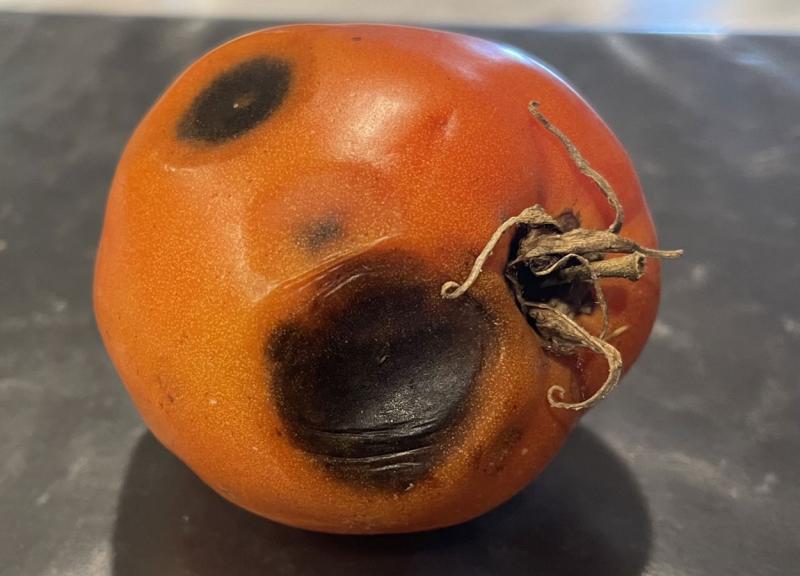
Written collaboratively by Madalyn Shires and Rhoda Burrows, former Professor & SDSU Extension Horticulture Specialist.
Soft rot occurs on most fruit and vegetables crops around the world. Rots can occur pre-or-post-harvest and result in a decline of quality and/or inedible food. Some of the most susceptible crops in South Dakota are tomatoes, peppers, and other solanaceous crops. It is important to know the symptoms of soft rot, as well as some management strategies that can be utilized to reduce re-occurrence of the problem.
Pathogen
There are several bacterial pathogens that can cause soft rot issues. Unlike fungal pathogens, bacteria are more contained inside the plant cells, and until symptoms of the disease are seen, they can remain undetected. Some of the most-common bacterial soft rot pathogens are Pectobacterium species and Pseudomonas species, however, there are other bacteria that can be responsible for rots.
Symptoms
Soft tissues of plants, such as stems (Figure 1), leaves, and fruit are all susceptible to soft rot symptoms. The most-common symptom of soft rot will be water-soaked spots on the susceptible tissue (Figure 2). As the bacterial numbers increase in the plant, starting the soft rot, the water-soaked spots will increase in size and become soft. Produce with soft rot will become mushy and discolored around the symptoms. As the infection worsens, produce may even begin to become discolored, have seepage, and also have a strong odor (Figure 3).
Stem
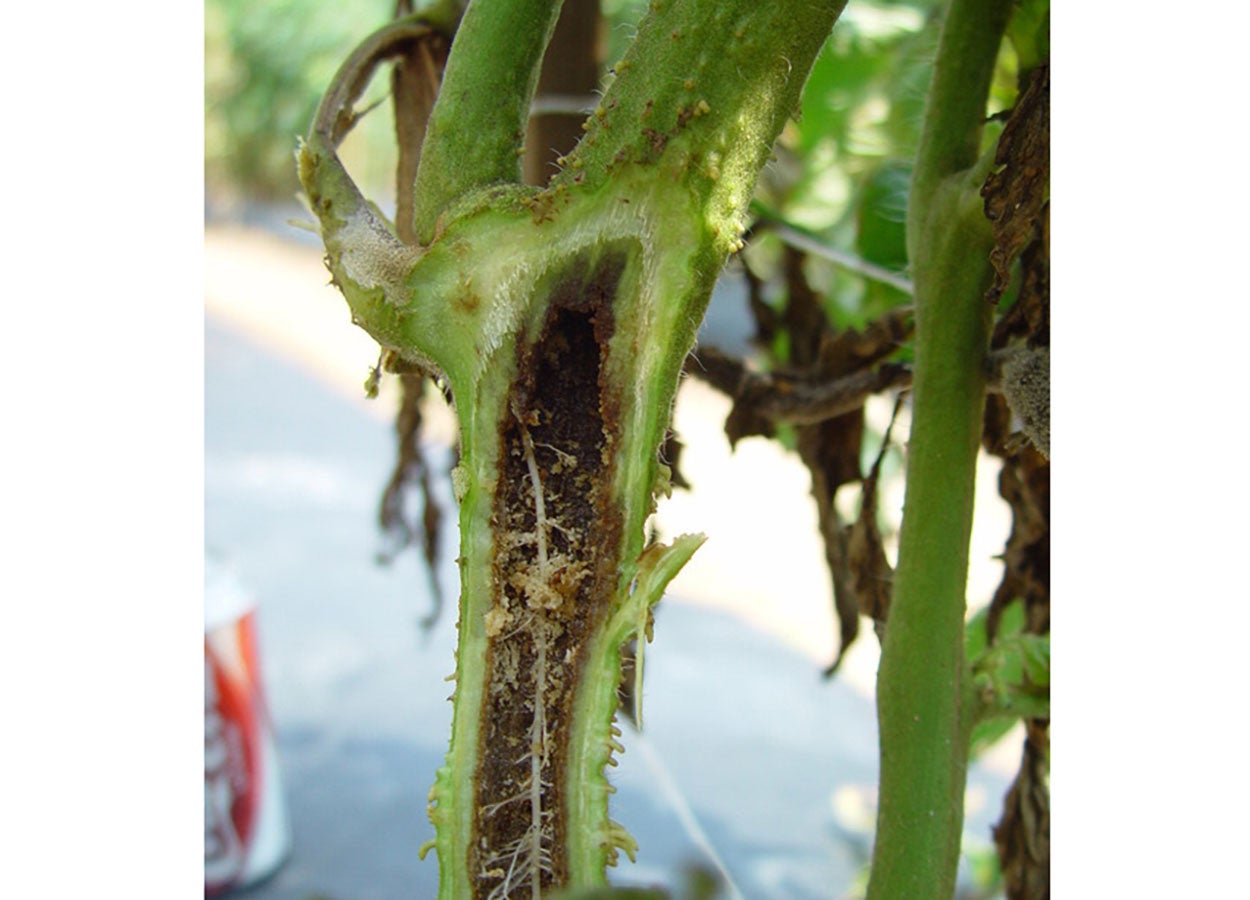
Tissues
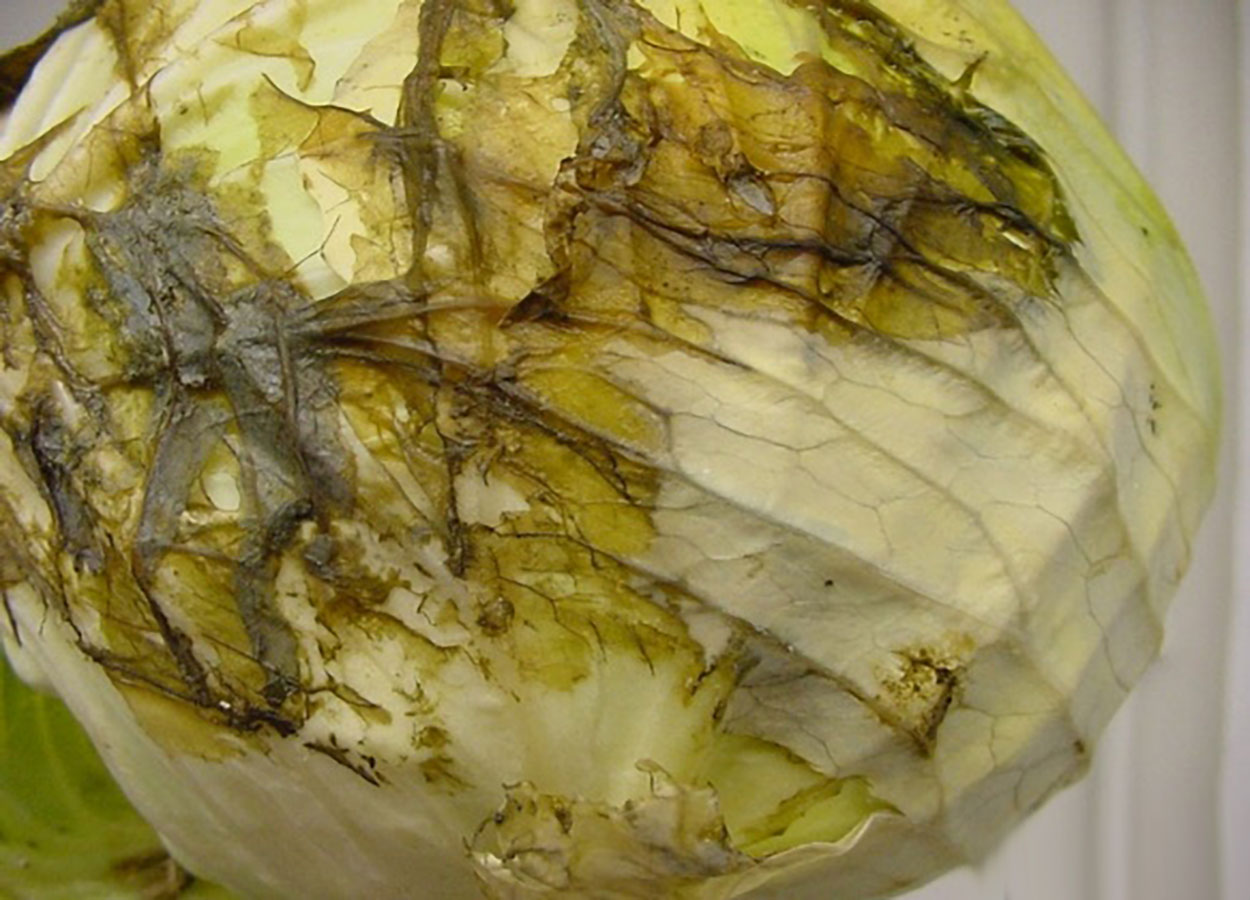
Advanced
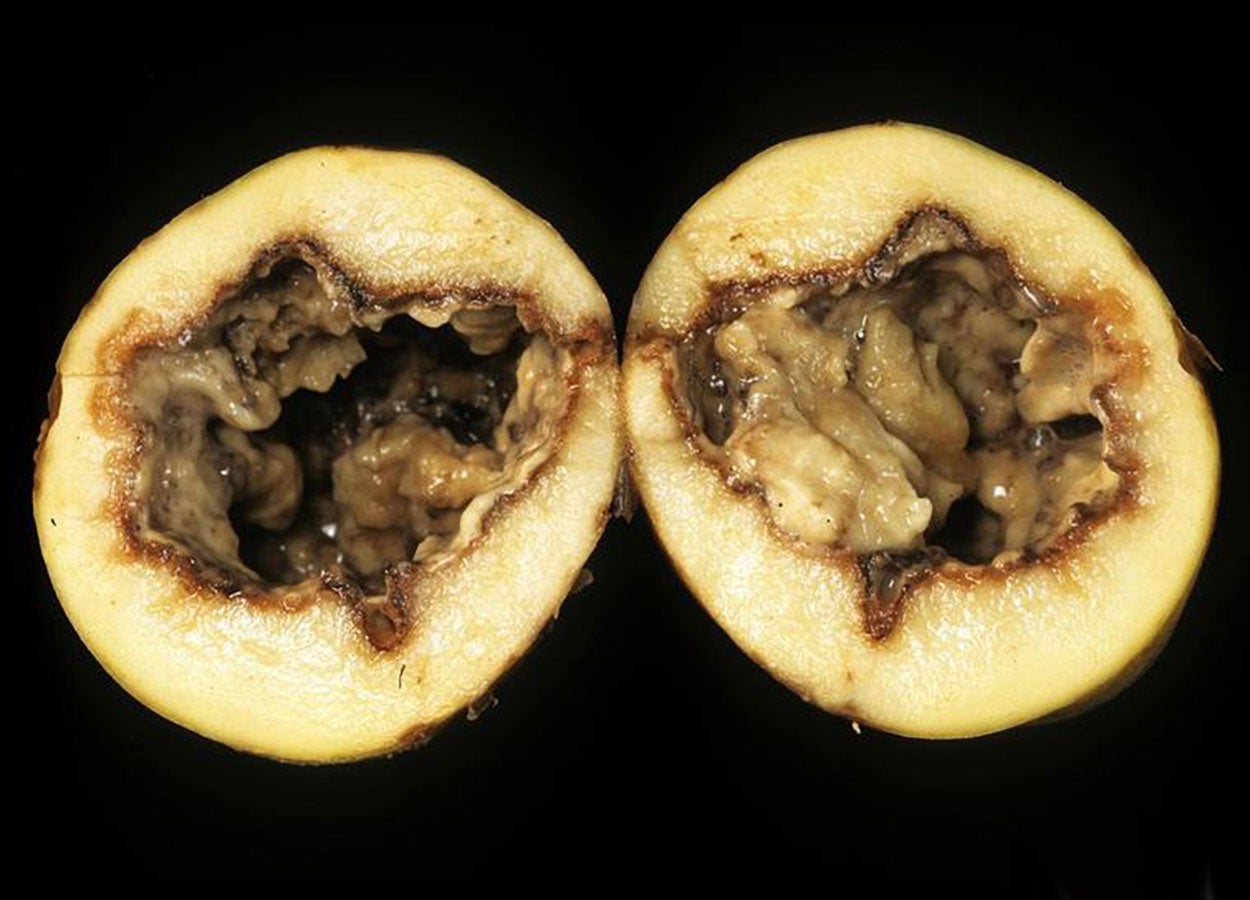
Management
There are several management strategies that can be utilized to reduce soft rot issues. As bacteria thrive in wet environments, management of irrigation can be impactful in preventing soft rot. Some irrigation strategies that can be utilized are good plant spacing to allow for air flow, watering with adequate amounts of water to keep plants healthy, ensuring that leaves and produce are drying well in-between watering events, and monitoring to see if water is standing on produce, such as where the stem attaches to the fruit/vegetable. The type of irrigation used can also be useful in management of soft rot, as sprinkler irrigation can leave standing water on plants and produce. Utilizing drip irrigation or soaker hoses will reduce leaf and produce wetness.
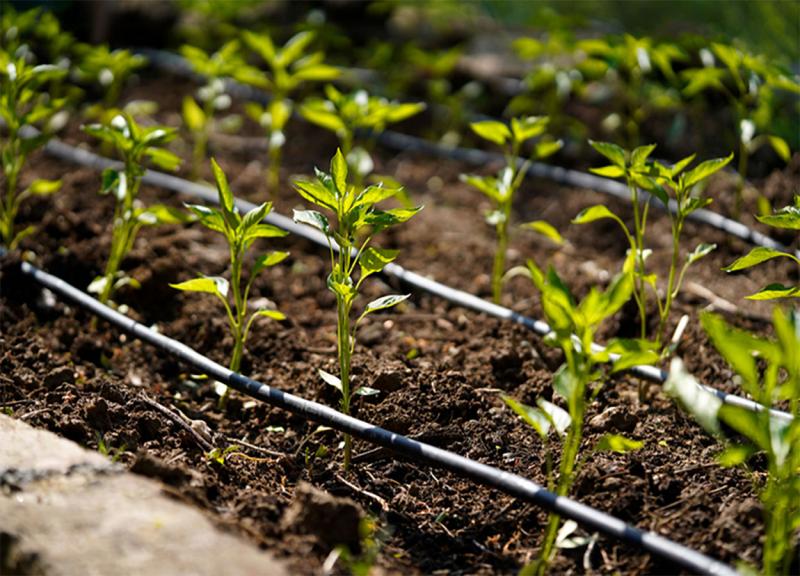
Other management strategies that can be utilized are avoiding damage to produce during the growing and harvest season and harvesting produce in dry conditions. If fruits/vegetables are going to be stored long-term, it is also important to inspect for symptoms of soft rot and to properly store them in dry, cool areas with good air movement.
When cleaning your garden spaces and preparing for the next growing season, it is important to destroy all plants displaying symptoms of bacterial disease. Composting these plants will only allow the bacteria to persist in the next growing season. If plants are heavily symptomatic for bacterial disease, it is recommended to remove them during the growing season to slow the spread of disease.
If soft rot is a constant issue over several years, there are also resistant varieties that can be utilized. However, as there are several bacteria that cause soft rot, it is important to know the exact one when selecting resistant varieties. Submitting samples for diagnosis and bacterial identification to diagnostic clinics, such as the SDSU Plant Diagnostic Clinic, will provide that information to growers.
Food Safety
Are plants displaying symptoms of bacterial soft rot safe for consumption? If produce is consumed immediately, rotten spots can be trimmed off. However, removing rotten spots from produce and storing it, either short-term or long-term, is not advised, as the damage from trimming can allow other, more-dangerous human pathogens to grow. It is also discouraged to can produce displaying soft rot symptoms, as the canning process might not kill all of the bacteria.
Resource
- Bacterial Soft Rot, University of Wisconsin-Madison Extension.


